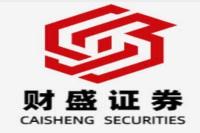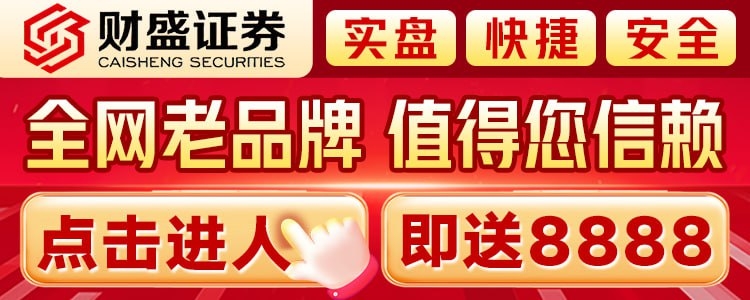Navigating the EV Trade Winds: A Deep Dive into EU-China Subsidy Talks
Meta Description: EU-China trade talks, electric vehicle subsidies, anti-subsidy duties, price commitment, trade friction, bilateral negotiations, WTO rules, China's EV industry, European automakers, economic impact. Understanding the complex negotiations between the EU and China regarding anti-subsidy measures on Chinese electric vehicles.
Introduction: Hold onto your hats, folks! The global electric vehicle (EV) market is a whirlwind of innovation, competition, and, increasingly, trade disputes. Right now, a crucial chess match is unfolding between the European Union (EU) and China, two heavyweight contenders in the EV arena. This isn't just about tariffs and trade; it's about the future of sustainable transportation, geopolitical influence, and the very fabric of the global economy. We're diving deep into the recent high-stakes negotiations between Brussels and Beijing, dissecting the complexities, analyzing the implications, and exploring what this all means for you, the consumer, and the future of electric mobility. Get ready for a rollercoaster ride!
EU-China EV Subsidy Negotiations: A Detailed Look
The automotive world is abuzz with the recent negotiations between the EU and China concerning anti-subsidy duties on Chinese electric vehicles. It's a complicated situation, a tangled web of subsidies, tariffs, and trade regulations. Let's break it down. The EU, concerned about alleged unfair subsidies given to Chinese EV manufacturers, initiated an investigation into potential anti-competitive practices. This threatened to slap hefty tariffs on Chinese EVs entering the European market - a potential game-changer for both sides.
But instead of a full-blown trade war – which would hurt everyone involved – the EU and China opted for negotiations. This isn't uncommon in international trade; often, direct confrontation is avoided in favor of dialogue and compromise. Think of it like a high-stakes poker game, where both players have a strong hand, but the smartest move is to find a mutually acceptable settlement.
These talks, held in Beijing from November 2nd to 7th, involved technical teams from both sides. Five rounds of intense discussions focused on a "price commitment" proposal submitted by the China Chamber of Commerce for Import and Export of Machinery and Electronic Products (CCCME). This proposal, essentially a pledge to adjust pricing strategies, aimed to address the EU's concerns about unfair subsidies. While the details remain confidential, the fact that five rounds of talks took place suggests both the complexity of the issue and the commitment of both sides to finding a solution.
What's at Stake?
The stakes are incredibly high. For China, the EU represents a significant EV export market. Tariffs could severely impact their ability to compete and would undoubtedly hurt their growth trajectory in the EU. For Europe, the issue is about fair competition. They want to ensure a level playing field for their own EV manufacturers and are wary of what they see as unfair advantages for Chinese competitors. The consumer also faces potential consequences; higher prices due to tariffs would directly affect affordability of EVs.
The Importance of Transparency and the WTO
The entire process is heavily scrutinized under the gaze of the World Trade Organization (WTO). The WTO framework sets rules for international trade, aiming to foster fairness and prevent protectionist measures. Both the EU and China are bound by these rules and must demonstrate compliance with established procedures. Any measures taken must be justified and based on credible evidence. Transparency in the negotiation process is paramount to ensure that the outcome is fair and adheres to international norms. Failure to do so could lead to further disputes and escalation of the trade conflict.
It’s not just about the immediate impact of tariffs either; this saga could set a precedent for future trade relations between the two economic giants. The outcome will influence how other countries navigate similar disputes concerning subsidies and fair trade practices.
Understanding the Price Commitment Mechanism
The heart of the EU-China discussions lies in the concept of a "price commitment." This isn't simply a price reduction; it's a more nuanced approach. It involves Chinese EV manufacturers publicly committing to adjusting their pricing strategies in the EU market to address the EU's concerns about unfair competition. This commitment would be monitored and verified by the EU to ensure compliance. If successful, it would avoid the need for punitive tariffs, allowing a smoother flow of EVs between countries.
This approach represents a sophisticated compromise. China avoids the potentially damaging impact of tariffs, while the EU gets assurances that its internal market isn't being flooded with unfairly subsidized goods.
The Role of Technology and Innovation
The EV sector is a hotbed of innovation. Both China and the EU are investing heavily in research and development, aiming to become leaders in this dynamic market. The outcome of these negotiations will have significant implications for technological advancement. A protracted trade war could stifle collaboration and slow down the development of crucial technologies. Conversely, a successful resolution could pave the way for greater technology sharing and accelerate the global transition to electric mobility.
Impact on the Consumer
Ultimately, the consumer is the one who feels the ripple effects of these complex trade negotiations. High tariffs, if imposed, would directly translate to higher prices for EVs in the European market. This could dampen consumer demand and slow down the adoption of electric vehicles. Conversely, a smooth resolution would allow for a more competitive market, potentially leading to lower prices and a wider selection of EVs for European consumers.
Frequently Asked Questions (FAQs)
Q1: What are the key points of contention in the EU-China EV subsidy dispute?
A1: The main issue is the EU's concern about potential unfair subsidies given to Chinese EV manufacturers, creating an uneven playing field for European companies. The EU believes these subsidies distort the market and give Chinese firms an unfair advantage.
Q2: Why did the EU and China choose negotiations instead of imposing tariffs immediately?
A2: Negotiations offer a less disruptive path than unilateral tariff imposition. A negotiated settlement avoids the potentially damaging effects of a trade war, benefiting both economies and maintaining smoother trade relations.
Q3: What is a "price commitment," and how does it work in this context?
A3: A price commitment involves Chinese EV manufacturers agreeing to adjust pricing to address the EU's concerns about unfair subsidies. It's a commitment to pricing practices, not just a simple price cut, and involves rigorous monitoring by the EU.
Q4: What is the role of the WTO in this dispute?
A4: The WTO provides a framework for international trade rules and dispute resolution. Both the EU and China must operate within the WTO's regulations, ensuring transparency and fairness in their actions.
Q5: What are the potential economic consequences of a trade war between the EU and China on EVs?
A5: A trade war could lead to higher prices for consumers, reduced market competitiveness, and a slowdown in the adoption of electric vehicles in both regions. It could also hinder technological advancements and hamper global efforts toward sustainable transportation.
Q6: What is the likely outcome of the negotiations, and what are the implications?
A6: Predicting the exact outcome is challenging. However, a successful negotiation leading to a price commitment is the most likely scenario. This would avoid a trade war, but the details of the agreement will significantly impact the future of EV trade between the EU and China.
Conclusion
The EU-China EV subsidy talks are a microcosm of the broader challenges and opportunities in the global EV market. The outcome will have far-reaching consequences, impacting trade relations, technological innovation, and consumer affordability. While the path remains unclear, the willingness of both sides to engage in negotiations offers a glimmer of hope for a mutually beneficial resolution. This intricate dance between two economic giants underscores the importance of navigating international trade with diplomacy, transparency, and a commitment to fair competition. The future of electric mobility depends on it, and so does the broader global economic landscape.



